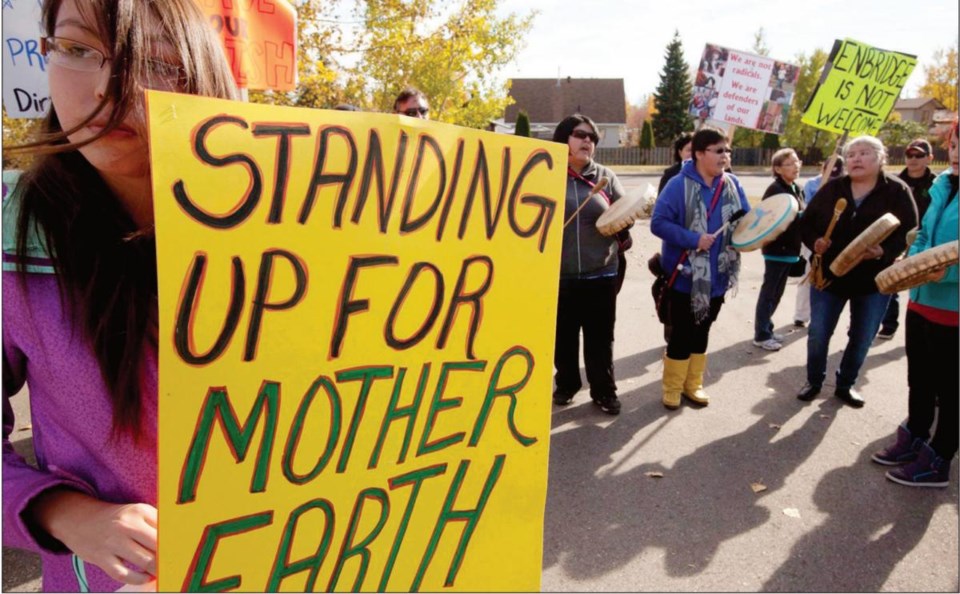A small group of protesters greeted the environmental review panel weighing the proposed Northern Gateway pipeline Tuesday as the hearings returned to British Columbia where the pipeline proponent will face cross-examination about the plans.
Members of the local Carrier-Sekani First Nations and conservationists held signs telling Enbridge to go home.
The $6-billion project would carry diluted bitumen from the Alberta oil-sands through northern B.C. to a tanker port in Kiti-mat for transport to markets in Asia.
The final hearings in Prince George will see company officials and interveners questioned under oath about environmental and socio-economic effects of the pipeline, safety standards and accident prevention and response.
Terry Teegee, vice-tribal chief for the Carrier Sekani Tribal Council, said the protest is meant to send a message to Enbridge and to the panel.
"We don't want this project in our territories or British Columbia or the coastal waters," Teegee said.
He said the Carrier-Sekani are not participating in the panel process because the panel does not have a mandate to examine aboriginal rights or the cumulative effects of a pipeline.
"I think where we see our fight is in the courts," Teegee said.
Todd Nogier, a spokesman for Enbridge Northern Gateway, said the hearings are a chance for the company to answer questions about pipeline design and safety.
"We're looking forward to having that detail put out in the public domain and to the [panel]," he said.
Nogier added this round of hearings will show the "tremendous" level of detail that's gone into the project design.
The B.C. government issued a news release Tuesday saying it has a list of questions for Enbridge officials. They centre on the company's proposed land-based spill prevention, response and recovery strategies. That includes finding out about where equipment is available for cleanup and how the company plans to detect potential leaks along the line.
But with tens of thousands of documents filed with the panel, and myriad experts on everything from how land forms change over time to marine engineering design, finding the right expert to answer those questions was proving a "continuing challenge," said Geoff Plant, a former attorney general appointed the chief legal strategist for the B.C. government at the hearings.
Plant said the province has specific questions to gauge whether an effective spill response can ever be put in place in such remote locations as the planned pipeline route.
"[The proposed pipeline is] going to be crossing some awfully pristine wilderness. It won't take much of a spill or a leak into a pristine creek that's going to have bitumen spilling into a bigger river that's going to be causing more harm than anyone wants, faster than anyone wants," Plant said during a break in the first day of hearings in Prince George.
The goal is to drill down into the technical details of the Northern Gateway proposal, he said.
The twin pipelines - one carrying diluted bitumen to the tanker port, the other carrying condensate from Kitimat back to Alberta - would be the largest energy project in B.C. history.
Enbridge has estimated that opening up Asian markets to Canadian oil would boost Canada's GDP by $270 billion over 30 years, and would generate total revenues in direct and indirect benefits to the federal and provincial governments at $81 billion over 30 years.
Of that, B.C. would receive about $6 billion, while Ottawa would receive about $36 billion and Alberta $32 billion.
Enbridge said Tuesday that the updated timeline for the pipeline, should it go ahead, would see it come into service in 2018.
The three-member panel review panel is to complete its report for the federal government by the end of next year.



